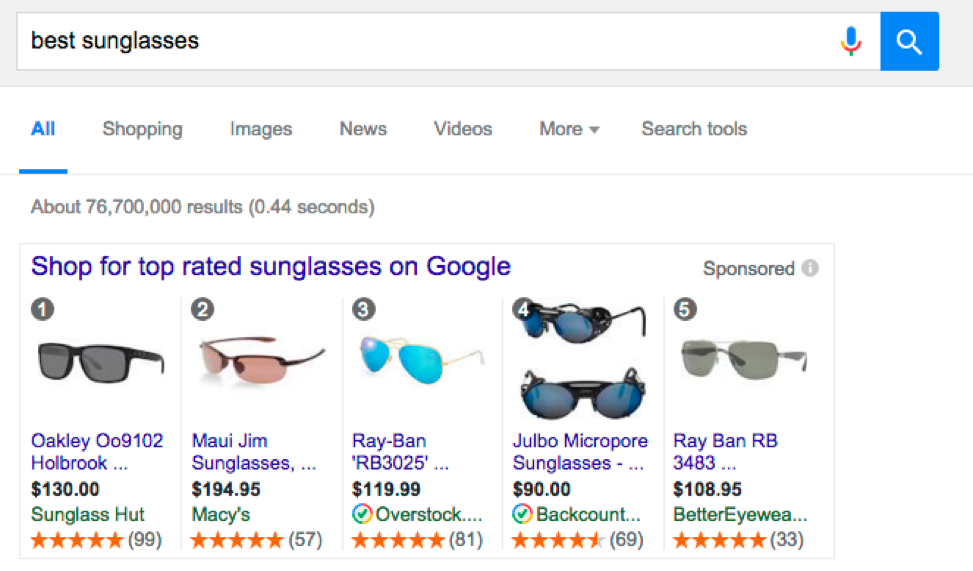If you haven’t noticed by now, Google Shopping is taking center-stage for retailers as we move deeper into 2016 – with more traffic, more tests and more features.
You certainly wouldn’t have missed Google removing text ads on the right-hand rail of their search engine results pages, leaving the space wide-open for even more product listing ads (PLAs).
With this update, it’s important to understand the changes taking place made to accommodate for an increased amount of advertisers spending on Google Shopping Campaigns.
Here are some of the latest updates you need to be aware of:
PLAs getting more third-party traffic
In 2014, Google announced it was partnering with a number of retail and ecommerce sites to allow them to show product listing ads on their web properties. This was dubbed ‘Adsense for Shopping’, and after some initial buzz in the paid search community — all we heard were crickets.
Fast-forward to Merkle’s recent Digital Marketing Report and you can see huge spikes to Google’s Search Partners’ share of PLA traffic in Q3 of 2015. Sounds like the partnership is ramping up and hopefully will continue to do so into 2016.
What it means for you: were you a retailer running Shopping Campaigns in Q3/Q4 2015? If so, check your metrics, did you notice an increase in impressions YoY attributable to this? Did CTR and CVR metrics stay stable?
Google’s expandable and scrollable PLA tests
In January 2016, we reported on seeing an expanded PLA view – showing up to 16 products at one time. This allowed PLAs to take up the majority of above-the-fold real estate on the SERPs – likely causing an increase in impressions and clicks – especially for retailers who don’t typically fall into the “first five”.

Now, in March, many advertisers are starting to see ‘scrollable’ PLA results on desktop, almost like a carousel. The emulates the scrollable results seen on mobile search for PLAs.

What it means for you: Google is always testing different formats and we can see its attention is currently on the right experience for PLAs. Do a few, quick searches for your products and see how they are showing up. Have you seen any fluctuations that might be due to a new format?
These insights are hard to nail down since we don’t know the testing parameters or have insight into the backend data, but at least sharing the story of what’s going on behind the scenes should help explain some performance.
Ranked PLAs for key searches
Though it’s been in testing since 2014, a new PLA ranking system has just come out of beta. Now, when a user types in a keyword with a modifier like ‘best’ or ‘top’ they will provide a tiny grey number icon to rank the items.

Wait, isn’t that unfair? According to Google, no. The way it works is simple – on queries containing ‘best’ or ‘top’ only the top-rated products are selected to participate in the auction. Once in the auction, the products then compete against each other for ad position.
Essentially as a user you won’t always be getting the ‘top’ product – you’ll be seeing a list of top products with the how much the advertisers are paying being taken into consideration.
What is means for you: check out those ratings of yours and make sure your products are ranking high enough to be considered for auctions like this.
Another thing to do is pull a search query report for your Shopping Campaigns to see how many times your products have matched to queries like ‘best’ or ‘top’. How are those terms doing for you? With strong performance, you might want to start caring about your reviews even more.
Since these are just a few of the tests and features rolling out for Google Shopping Campaigns in 2016, please comment below with any features you’ve seen and of course, what they mean for you.
The article Three recent changes to Google Shopping you need to be aware of was first seen from https://searchenginewatch.com
No comments:
Post a Comment